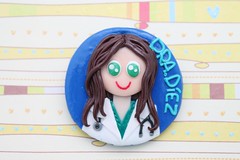
There's a great deal of information colse to these days about anxiety, especially on the internet. So you'd be forgiven for thinking that habitancy would no longer be asking the ask "How can I tell if I'm having an anxiety attack?" But you'd be wrong!
The fact is that anxiety is such a unique affliction with, at times, such severe symptoms that sufferers can sometimes feel convinced that they are experiencing something more serious (from a medical point of view) than an anxiety attack. That's a very natural reaction to have when you're experiencing such severe physical symptoms.
A person suffering an anxiety attack can sense many distinct symptoms, some of which can be so severe that the person experiencing them becomes convinced that they must be caused by something more "serious" than anxiety. The fear that you're having a heart attack is a very base one and perfectly understandable when you realise that a pounding heart and rapid heart beat are two classic symptoms of an anxiety attack.
Anxiety sufferers are often told that their anxiety problems are "all in your head" so it seems perfectly logical therefore to think that physical problems are caused by something different. They're not, of course. In fact, it's very rare for any of these symptoms to be caused by whatever else other than the original feelings of anxiety and fear.
But how do you know? How can you be sure?
Well, the first step is to look at the list below. These signs are all indicative of an anxiety attack:
• An attack that starts suddenly with no warning and no positive cause.
• Feeling that you're in great danger.
• Feeling that you're about to lose control.
• Feeling that you're about to die.
• Fearing that you're going mad.
• Fearing that you have a serious medical condition (such as experiencing a heart attack)
Then there are the physical symptoms, the ones that can so often cause anxiety sufferers to doubt their own health:
• A pounding heart
• An increased heart rate
• Shaking or trembling
• Shortness of breath
• Sweating
• Chest pain or discomfort
• Nausea or abdominal discomfort
• dullness or tingling feelings
• Feeling very cold or very hot
• Feeling dizzy, lightheaded or faint
• Feeling detached from yourself (depersonalised)
• Feeling that things are unreal (derealisation)
If you've experienced four or more of these physical symptoms of anxiety, combined with any or all of the signs from the first list, then it's a pretty sure bet that you've had an anxiety attack!
When you've calmed down and are feeling a miniature best it's a good idea to make a note of all the symptoms that you experienced while the attack. That way you can take your list to your doctor knowing that you won't have missed out anything. It's all the time best to check things out with your doctor first as he/she can confirm that it really is anxiety that's causing you these awful symptoms and not whatever more serious. There are medical conditions with symptoms that mimic those of panic attacks so it's all the time best to be on the safe side and get things checked out.
Even after you've been given the all clear by your doctor there's bound to be times when you doubt their diagnosis. Some habitancy even go for second or third opinions in an endeavor to convince themselves once and for all that they're truly well. Even then, it can still be difficult to get your head colse to the fact that your symptoms are caused by a thinking qoute rather than a physical one.
I hope I've been able to give a clear rejoinder to the ask "How can I tell if I'm having an anxiety attack?" Some habitancy would tell you that if you're having an anxiety attack you'll really know it for sure! But for those who would rather duplicate check things for themselves the checklist above is a helpful guide to confirming what you probably already knew!
Once you've spoken to your doctor and been given a clean bill of physical health, the best way to move send is to look at the varied treatments that are available these days to help anxiety sufferers. Your doctor will be able to propose you on some of these and there are many helpful websites out there that can give you guidance or tips on how to lessen your anxiety symptoms. There are many distinct things to try and you need to find what's best for you. It may take some time but it'll be a journey that you'll never regret taking.





















